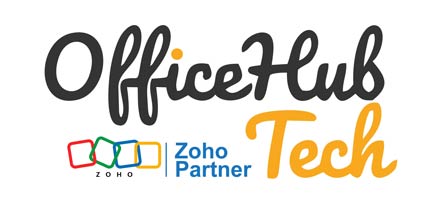
The Role of AI Assistants in Modern AVSI Workflows
According to the research, virtual assistants can increase productivity by 15%, allowing professionals to save up to 110 minutes each day on repetitive reading and answering queries.
As these AV Project Management Tools based on AI have become more sophisticated, they are not only automating but also augmenting human decision-making.
Another research shows that 40% of current job tasks across multiple fields are suitable for automation or augmentation with AI, a number expected to grow with continuous learning and adaptation.
Keeping in mind these statistics, it is clear that artificial intelligence assistants are important for improving workflows in many industries, including AVSI. As real-time responsiveness, technical precision, and 24/7 availability are essential, AI virtual assistants offer transformative potential. From automating support functions to assisting with system configuration and troubleshooting, these tools reduce the burden on human teams while ensuring consistent and timely service delivery.
This blog will explore how AI assistants are reshaping modern AVSI workflows. But before diving into their impact, let’s first understand how these intelligent assistants actually work.
How do AI Assistants Work in Modern AVSI Workflows?
AI Assistants, also known as enterprise copilots or digital assistants, are advanced tools that improve efficiency in AVSI workflows using the following steps:
Step 1: User Input
The process begins when a user, such as an AV technician, project manager, or client, provides input. This may be a voice request, a text message, or a choice in an app. For instance, a user may request that the assistant display a system diagram, diagnose a device, or verify the status of the project.
Step 2: Understanding the Question (NLP)
Next, the assistant applies Natural Language Processing (NLP) to comprehend the request. NLP analyzes the input of the user, extracts most relevant terms, and determines the purpose of the question. If the assistant is not certain what the user intends, it can request clarification or ask for assistance from a human specialist.
Step 3: Retrieving the Right Information
Once the request is understood, the assistant searches its knowledge base. It may pull information from pre-trained models or internal AVSI system data. Some AI assistants also connect directly with third-party tools used in AVSI workflows, like scheduling systems, inventory platforms, or device management software.
Step 4: Providing a Response
Finally, the assistant responds. It delivers the information in a clear, conversational way using Natural Language Generation (NLG). This means it turns technical data into easy-to-understand language. It can send a text, give a voice response, or even take action like submitting a support ticket or updating a project timeline. In some cases, it may also provide links to documents or cite sources for reference.
How are AI Assistants powering AVSI Workflows?
AI Assistants are changing the way AVSI companies work, as justified by the following benefits:
1. Better Scheduling and Task Management
As an AV Client Management Solution, AI Assistants help plan meetings, site visits, and technician schedules with ease. They check everyone’s availability and send reminders. This avoids double bookings and missed appointments. Teams can focus more on the actual work instead of planning. It keeps the daily workflow organized and reduces stress for team members.
2. 24/7 Customer Support
Smart AV Business Assistant can answer common customer questions at any time of day. They help with tracking service requests, booking appointments, or giving simple troubleshooting steps. This improves customer satisfaction. It also lowers the number of support calls for human agents. Customers feel valued when they get instant help without waiting.
3. Improved Team Communication
AI tools help teams stay updated by summarizing emails and meetings. They also list action items and reminders. This reduces misunderstandings among AV teams and saves time after meetings. Everyone knows what to do next without confusion. It helps remote and on-site workers stay in sync more easily.
4. Quick Data Reports and Insights
AI Assistants gather and organize project data quickly. They turn information into simple charts or summaries. This helps AV managers make smart decisions faster. Teams can also share clear updates with clients and stakeholders. It saves hours that would be spent doing manual reporting.
5. Simplified Onboarding for New Staff
AI helps new technicians learn faster by guiding them through tasks. It can explain how to set up AV systems and follow safety rules. This makes the learning process smoother. New hires can start working confidently without delay. It also reduces the burden on senior staff who usually train new employees.
6. Instant HR Help
AI Assistants can answer questions about leave, shift timings, or company policies. Employees get quick help without waiting for HR staff. This makes internal communication more efficient. It also frees up HR teams to focus on bigger tasks. Staff feel supported and informed at all times.
7. Support for Content Management
Creative teams in AVSI firms can use AI to help write emails, create content ideas, or organize media files. This saves time and improves workflow for marketing and communication teams. It also helps maintain brand consistency across all materials. AI makes sure that the right content reaches the right audience.
8. Real-Time Compliance Monitoring
AI can watch for policy violations and flag risks in real time. It checks if AV installations follow industry standards and safety rules. This helps avoid legal issues and delays. It builds trust with clients and improves quality control. Companies stay audit-ready without extra manual effort.
9. Language Translation for Global Teams
AI Assistants can translate messages instantly between team members speaking different languages. This helps international AVSI teams work together more easily, especially during installations abroad. It also improves client communication in multilingual regions. Teams can avoid confusion and finish projects more smoothly.
How to Choose the Right AI Assistant?
Selecting the right AI assistant as an AV Client Management Solution involves evaluating several important factors to ensure it aligns with your business goals. You can start by identifying the primary purpose of the assistant. It can vary from automating business processes, improving team productivity, to supporting specific tasks within the AV industry. Additionally, consider the features offered, such as AI-powered automation, voice recognition, and real-time business insights that can drive smarter decision-making. Security and privacy are also critical when handling sensitive data, so it is essential to choose an AI assistant with robust data protection measures.
Are you an AV company seeking reliable and industry-specific AI solutions? Office HubTech specializes in building AI-powered virtual assistants tailored for the AVSI sector. Their expertise also includes Zoho CRM consultation for the AV industry, helping businesses streamline customer relationship management alongside intelligent automation. Their solutions are designed to streamline workflows, improve efficiency, and support seamless integration with existing systems.
FAQs
Q: Will AI assistants replace AV technicians or engineers?
Ans: AI assistants support technical teams but don’t replace skilled AV professionals.
Q: Can AI virtual assistants integrate with AV platforms like Zoho CRM?
Ans: Yes, they integrate smoothly with platforms like Zoho CRM to manage AV projects and clients.
Q: Do AI assistants work offline in AV environments?
Ans: Most require the internet, but some offer limited offline functions.
Q: What are the best AI tools for AV businesses?
Ans: Tools designed for AV workflows, like those by Office Hub Tech, offer the best fit.
Q: What kind of analytics do AI assistants provide for AV businesses?
Ans: They deliver insights on project timelines, customer queries, and technician performance.







